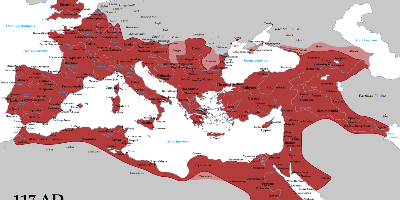1 janv. 508 av. J.-C. - Athenian Democratic Constitution
Description:
The reforms that Solon initiated dealt with both political and economic issues. The economic power of the Eupatridae was reduced by forbidding the enslavement of Athenian citizens as a punishment for debt (debt bondage), by breaking up large landed estates and freeing up trade and commerce, which allowed the emergence of a prosperous urban trading class. Politically, Solon divided the Athenians into four classes, based on their wealth and their ability to perform military service. The poorest class, the Thetai, who formed the majority of the population, received political rights for the first time and were able to vote in the Ecclesia (Assembly). But only the upper classes could hold political office. The Areopagus continued to exist but its powers were reduced.The new system laid the foundations for what eventually became Athenian democracy, but in the short-term it failed to quell class conflict and after twenty years of unrest the popular party, led by Peisistratus, seized power (in 541 BC). Peisistratus is usually called a tyrant, but the Greek word tyrannos does not mean a cruel and despotic ruler, merely one who took power by force. Peisistratus was in fact a very popular ruler, who made Athens wealthy, powerful, and a centre of culture. He preserved the Solonian Constitution, but made sure that he and his family held all the offices of state.
Peisistratus built the first aqueduct tunnel at Athens, which most likely had its sources on the slopes of Mount Hymettos and along the Ilissos river. It supplied, among other structures, the fountain house in the southeast corner of the Agora, but it had a number of branches. In the 4th century BC it was replaced by a system of terracotta pipes in a stone-built underground channel, sometimes called the Hymettos aqueduct; many sections had round, oval or square access holes on top of about 10 cm × 10 cm (4 in × 4 in). Pipe segments of this system are displayed at the Evangelismos and Syntagma Metro stations.
Peisistratus died in 527 BC and was succeeded by his sons Hippias and Hipparchus. They proved to be much less adept rulers and in 514 BC, Hipparchus was assassinated in a private dispute over a young man (see Harmodius and Aristogeiton). This led Hippias to establish a real dictatorship, which proved very unpopular. He was overthrown in 510 BC. A radical politician with an aristocratic background named Cleisthenes then took charge, and it was he who established democracy in Athens.
The reforms of Cleisthenes replaced the traditional four phyle ('tribes') with ten new ones, named after legendary heroes and having no class basis; they were in fact electorates. Each phyle was in turn divided into three trittyes and each trittys had one or more demes, which became the basis of local government. The phyle each elected fifty members to the Boule, a council which governed Athens on a day-to-day basis. The Assembly was open to all citizens and was both a legislature and a supreme court, except in murder cases and religious matters, which became the only remaining functions of the Areopagus.
Most public offices were filled by lot, although the ten strategoi (generals) were elected. This system remained remarkably stable and, with a few brief interruptions, it remained in place for 170 years, until Philip II of Macedon defeated Athens and Thebes at the Battle of Chaeronea in 338 BC.
Ajouté au bande de temps:
Date:
1 janv. 508 av. J.-C.
Maintenaint
~ Il y a 2535 ans
